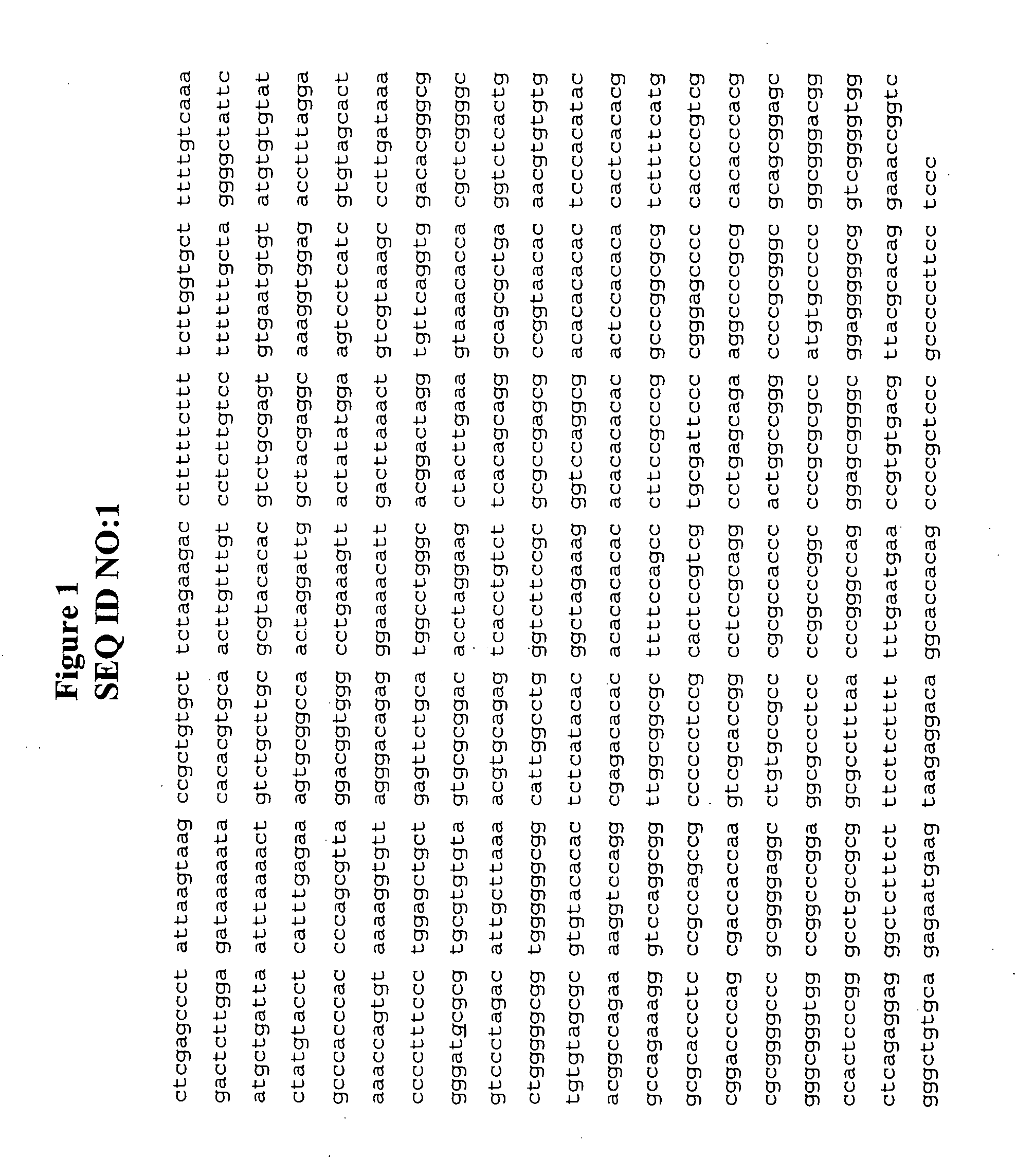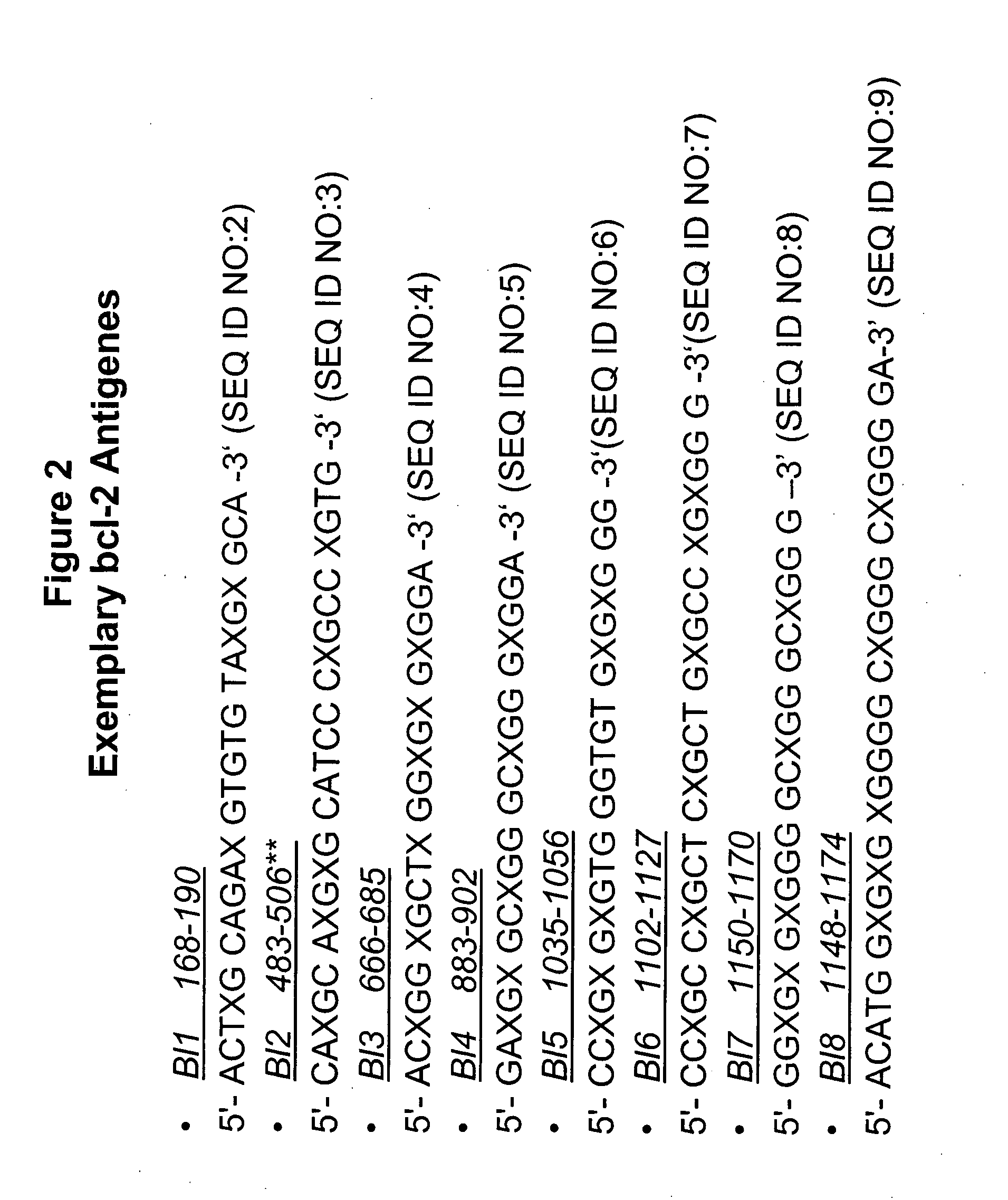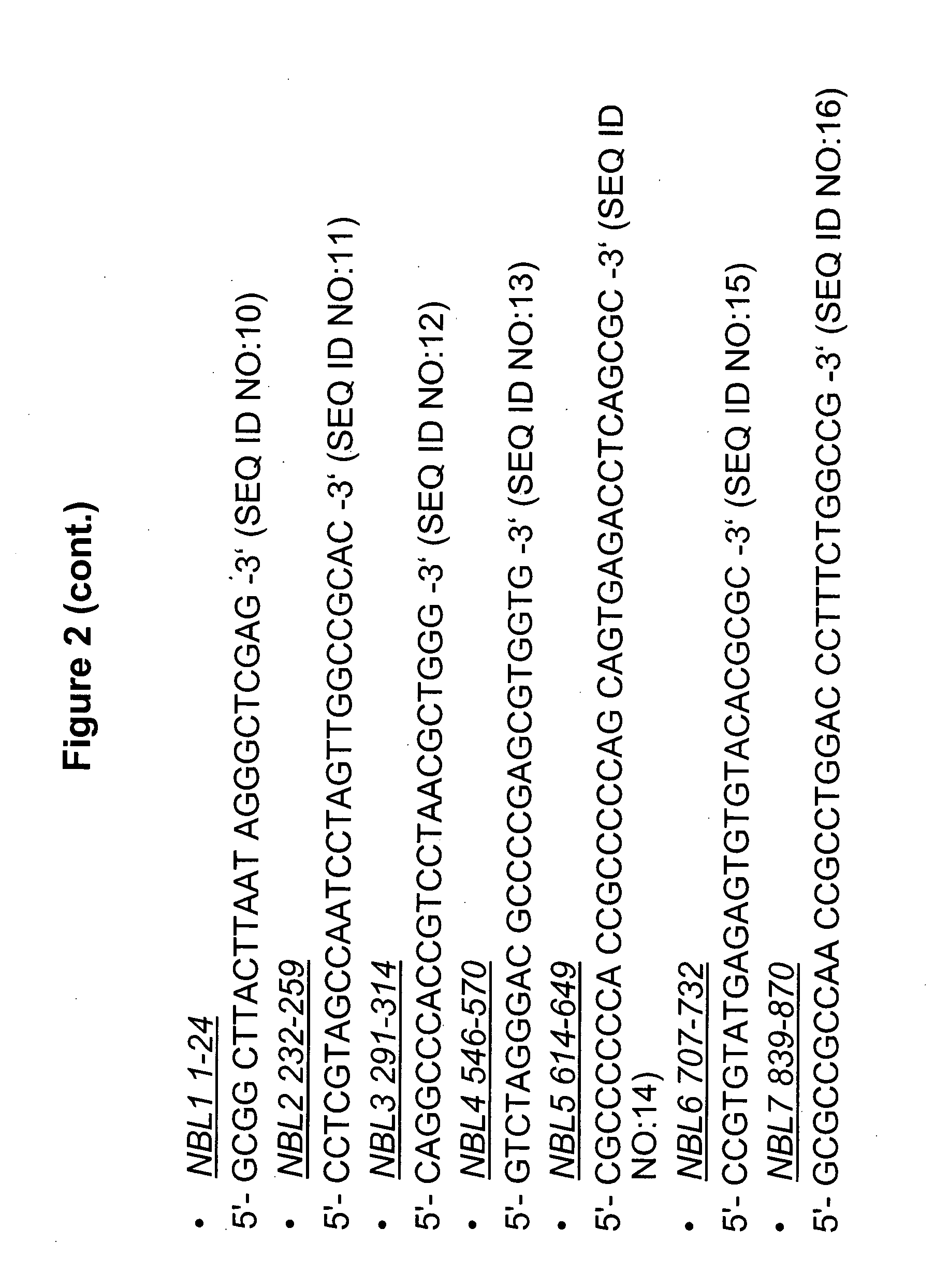Methods and compositions for the inhibition of gene expression
a technology of gene expression and composition, applied in the direction of drug composition, genetic material ingredients, organic chemistry, etc., can solve the problems of slow degradation of antisense, ineffective protein-based drugs, and difficulty in getting a sufficient amount, so as to reduce the proliferation of cells
- Summary
- Abstract
- Description
- Claims
- Application Information
AI Technical Summary
Benefits of technology
Problems solved by technology
Method used
Image
Examples
example 1
Materials and Methods
[0207] This Example describes experimental methods utilized in the below examples.
[0208] A. Cell Lines
[0209] Cell lines used in experiments of the present invention are described below.
MDA-MB-231
[0210] Tissue: adenocarcinoma; mammary gland; breast; pleural effusion [0211] Tumorigenic: forms adenocarcinoma grade III [0212] Receptors expressed: Epidermal Growth Factor (EGF) and Transforming growth factor (TGF-alpha) [0213] Oncogene: wnt3+ and wnt7h+
REFERENCES
[0214] Siciliano M J, Barker P E, Cailleau R. Mutually exclusive genetic signatures of human breast tumor cell lines with a common chromosomal marker. Cancer Res. 1979 March; 39(3):919-22. [0215] Calleau R, Olive M, Cruciger Q V. Long-term human breast carcinoma cell lines of metastatic origin: preliminary characterization. In vitro. 1978 November; 14(11):911-5. [0216] Cruciger Q V, Pathak S, Calleau R. Human breast carcinomas: marker chromosomes involving 1 q in seven cases. Cytogenet Cell Genet. 1976...
example 2
c-ki-RAS
[0280] This example describes the ability of oligonucleotide compounds targeted against the promoter of the c-ki-Ras gene to inhibit the growth of cancer cell lines. Experiments were performed as described in Example 1. The results are shown in FIGS. 13 and 19. The sequences of the oligonucleotides targeted against c-ki-Ras as well as the sequence of c-ki-Ras gene are shown in FIGS. 5 and 6.
example 3
Bcl-2
[0281] This example describes the ability of oligonucleotide compounds targeted against the promoter of the bcl-2 gene to inhibit the growth of cancer cell lines. Experiments were performed as described in Example 1. The results are shown in FIGS. 14 and 20. The sequences of the oligonucleotides targeted against bcl-2 as well as the sequence of bcl-2 gene are shown in FIGS. 1 and 2.
PUM
| Property | Measurement | Unit |
|---|---|---|
| body weight | aaaaa | aaaaa |
| size | aaaaa | aaaaa |
| body weight | aaaaa | aaaaa |
Abstract
Description
Claims
Application Information
 Login to View More
Login to View More - R&D
- Intellectual Property
- Life Sciences
- Materials
- Tech Scout
- Unparalleled Data Quality
- Higher Quality Content
- 60% Fewer Hallucinations
Browse by: Latest US Patents, China's latest patents, Technical Efficacy Thesaurus, Application Domain, Technology Topic, Popular Technical Reports.
© 2025 PatSnap. All rights reserved.Legal|Privacy policy|Modern Slavery Act Transparency Statement|Sitemap|About US| Contact US: help@patsnap.com



